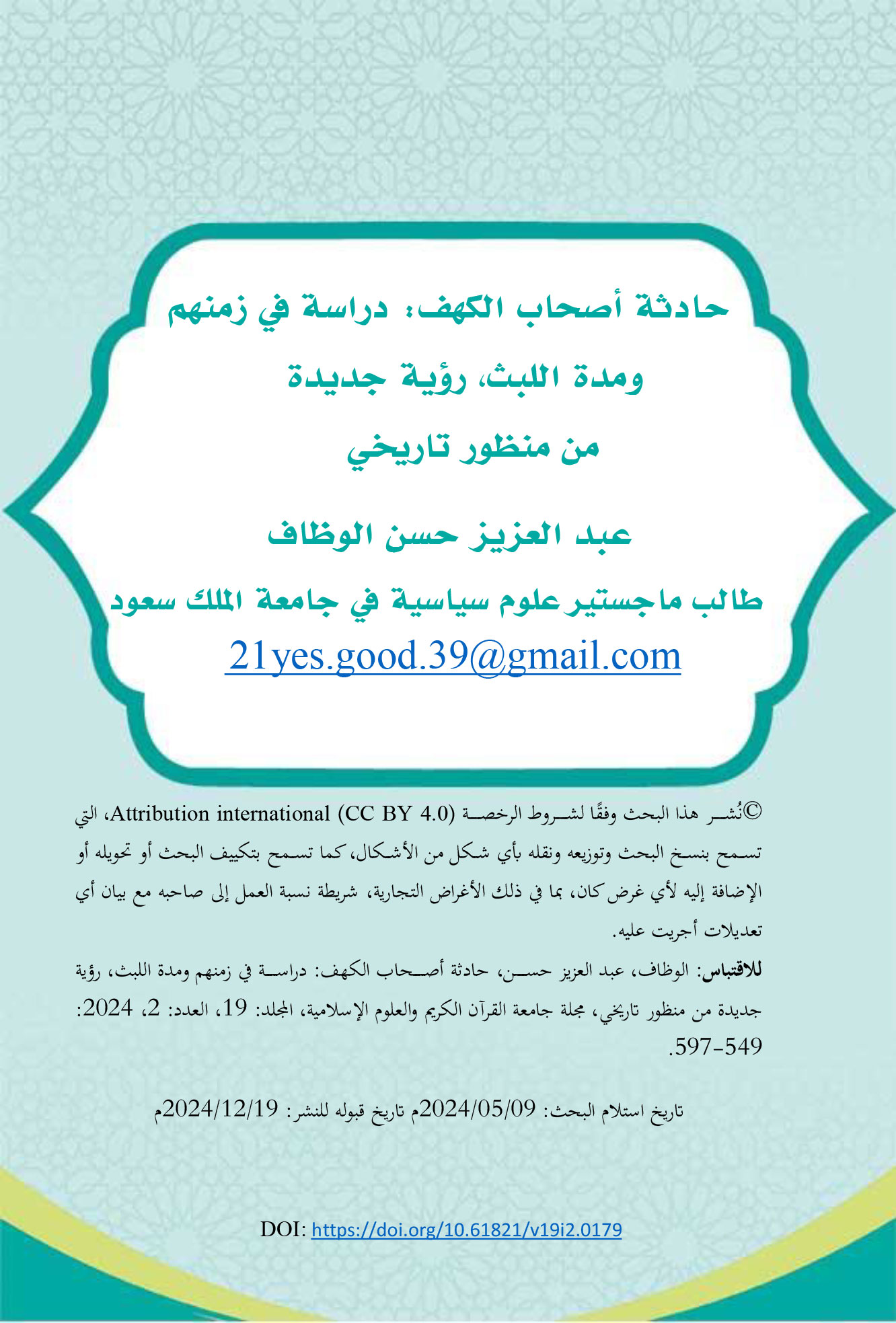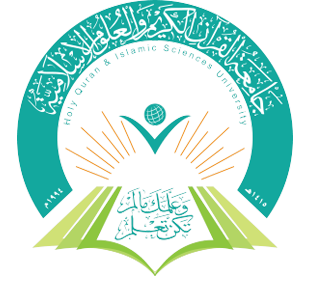The Incident of the Companions of the Cave: A study of their time and the length of stay, a new vision from a historical perspective
DOI:
https://doi.org/10.61821/v19i2.0179Keywords:
Quran, Copts, time, place, Arisians, the inscription wereAbstract
This paper attempts to discuss the story of the people of the Cave as narrated in Holy Quran using a historical theoretical approach. It aims at dealing with it as a truthful incident that was in a definite period of history. Considering the story from the moment Allah (SWT) disabled the youths' ability to hear till they were awaken again, we will attempt a significant review to the period of stay of these young men in the Cave. Consequently, our discussion will concentrate on three arguments relevant to the period of their stay. The first argument is to question the already determined period of their stay in the Cave as 309 years. This is done by making a connection between this period of stay and the lifespan of prophet Jesus.
The second argument is about making a connection between this period and the mission of our prophet Mohammed (PBUH). This is done by studying the reasons of revelations of Qur'anic verses in question on the one hand, and by re-examining the concepts of spirit and that of inscription on the other. Then, in the third argument we try to reach the exact time of the incident by studying the relationship of the incident to Arius or the Arisian faith and the Council of Nicaea, then their relationship to Egypt and the Coptic calendar of martyrs.
Among the many significant findings of this study is that there is a close connection between the incident of the cave and the lives of both prophets Mohammed and Jesus (PBUT). In addition, It has also been found that there is a remarkable spatio-temporal connection between the incident selected for this study and the emergence of the Arisian ethnic group that appeared at the onset of the fourth century A. D.
Downloads

Downloads
Published
Issue
Section
License
Copyright (c) 2024 Journal of the University of Holy Quran and Islamic Sciences

This work is licensed under a Creative Commons Attribution 4.0 International License.
©This article is an open access article distributed under the terms and conditions of the Creative Commons Attribution (CC BY) license












